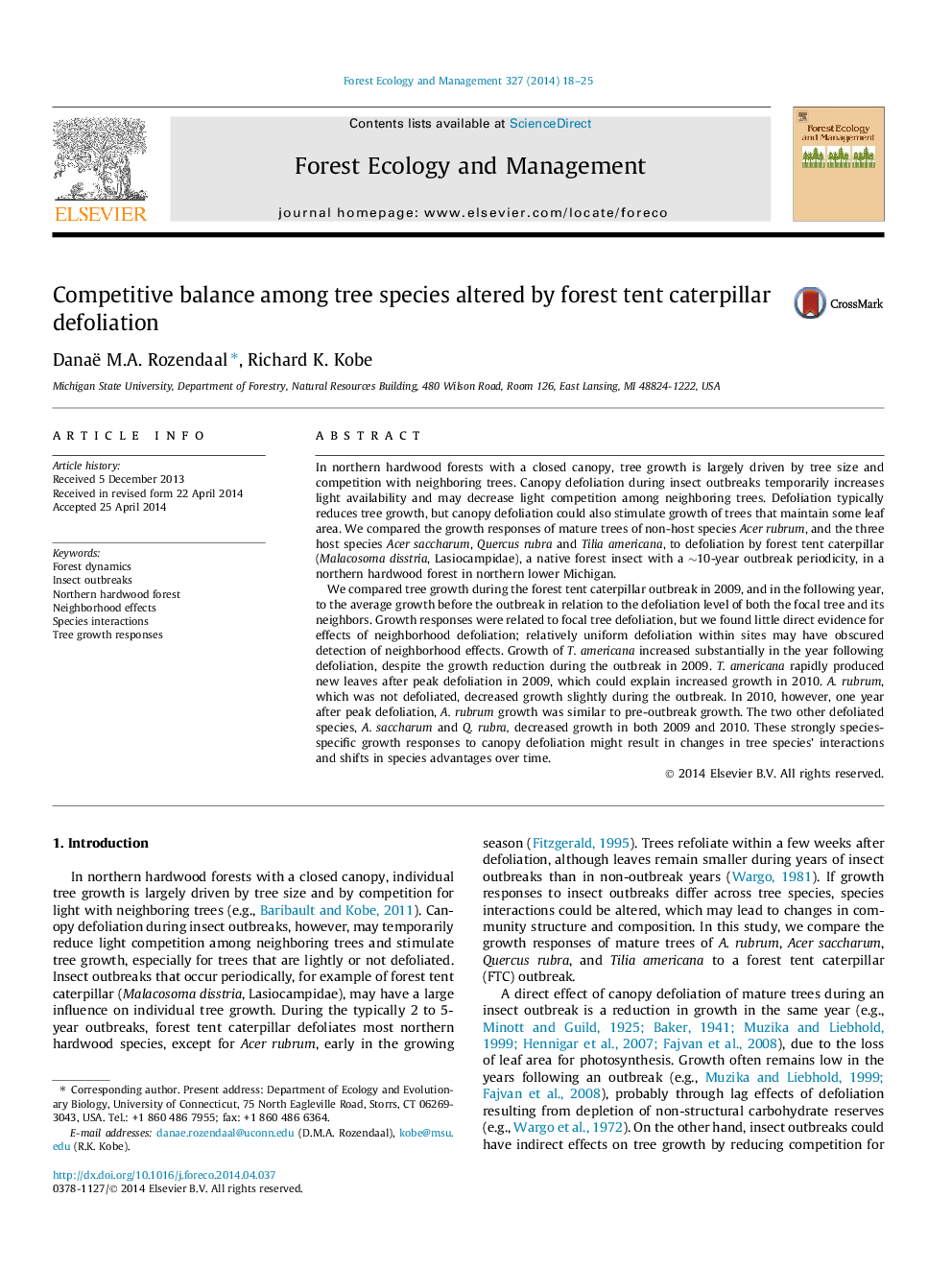| Article ID | Journal | Published Year | Pages | File Type |
|---|---|---|---|---|
| 6543450 | Forest Ecology and Management | 2014 | 8 Pages |
Abstract
We compared tree growth during the forest tent caterpillar outbreak in 2009, and in the following year, to the average growth before the outbreak in relation to the defoliation level of both the focal tree and its neighbors. Growth responses were related to focal tree defoliation, but we found little direct evidence for effects of neighborhood defoliation; relatively uniform defoliation within sites may have obscured detection of neighborhood effects. Growth of T.americana increased substantially in the year following defoliation, despite the growth reduction during the outbreak in 2009. T.americana rapidly produced new leaves after peak defoliation in 2009, which could explain increased growth in 2010. A.rubrum, which was not defoliated, decreased growth slightly during the outbreak. In 2010, however, one year after peak defoliation, A. rubrum growth was similar to pre-outbreak growth. The two other defoliated species, A. saccharum and Q. rubra, decreased growth in both 2009 and 2010. These strongly species-specific growth responses to canopy defoliation might result in changes in tree species' interactions and shifts in species advantages over time.
Keywords
Related Topics
Life Sciences
Agricultural and Biological Sciences
Ecology, Evolution, Behavior and Systematics
Authors
Danaë M.A. Rozendaal, Richard K. Kobe,
